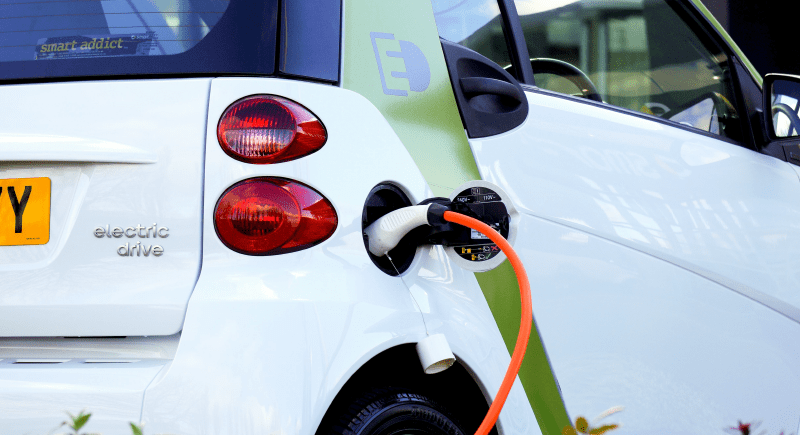
June 10, 2021 PNNL-WSU DGRP provides pathway from classroom to national laboratory
By Karen Hunt, WSU Office of Research
Batteries developed by Shuo Feng could someday revolutionize the nation’s power grid and help electric vehicles go further on one charge than ever before.
Feng is one of five students who completed their doctorate program through the Pacific Northwest National Laboratory (PNNL) and Washington State University Distinguished Graduate Research Program (DGRP) in May.
The DGRP plays an important role in training the next generation of researchers and scholars and provides an important conduit for WSU students to work on a nationally relevant project central to PNNL’s mission, conducting fundamental science or applied research relevant to energy, earth systems or national security.
“I am working on developing high energy-density lithium-sulfur batteries which can be used in future power grids and electric vehicles,” said Feng. “During the last two years, our team at PNNL has thoroughly discussed the challenges in practical sulfur cathodes and elucidated the design principles of sulfur cathodes for practical applications. Our investigations on material synthesis, cathode porosity, and electrolyte permeability provided a basis for the next phase of lithium-sulfur battery research.”
The PNNL-WSU DGRP is designed to help doctorate students work collaboratively with faculty at WSU and scientists at PNNL. In this program, the students complete their course work and qualifying exam at WSU and then transfer to PNNL for the remainder of their research. This provides students the opportunity to leverage PNNL’s state-of-the-art research infrastructure and to work directly alongside their advisors and other collaborators at PNNL.
“The PNNL-WSU Distinguished Graduate Research Program is a unique opportunity that taps into the knowledge and world-class capabilities available at both institutions,” said Asaph Cousins, professor in the School of Biological Sciences and WSU DGRP program manager.
The DGRP plays an important role in training the next generation of researchers and scholars and provides an important conduit for WSU students to work on a national project central to PNNL’s mission.
“The DGRP sets students up for success in the next phase of their research career and beyond. The training and experience in a national laboratory setting allows these students to build on the knowledge from the classroom and learn how to tackle hard scientific questions and real-world technological challenges,” said Suresh Baskaran, director of research partnerships at PNNL.
Along with Feng, this year’s graduates are Xiaolu Li, Gowtham Kandaperumal, Benjamin Schuessler, and Monish Mukherjee, which is the largest group of DGRP students to graduate within a single semester.
“The DGRP offers a valuable opportunity to learn new technologies and communicate with scientists with different backgrounds in PNNL. It provided me with different angles to think about my research and dig deeper with cutting-edge technologies,” said Li. “The experience helped me to look into what I really want to do and plan the right career path for me.”
The program aligns WSU faculty and students with scientists and their research programs at PNNL to increase the number of STEM doctorate students at WSU who will then go on to work in universities, national laboratories and industry. The program matches students’ research interests with existing areas of collaboration between WSU and PNNL, such as nuclear science and engineering, electric power grid, bioproducts, catalysis, environment, water and soil science and engineering, and other emerging areas of collaboration.
“The opportunity presented by DGRP to work in a national laboratory setting has provided me with great exposure to the wide diversity of ongoing research projects at PNNL,” said Mukherjee. “This has immensely helped me envision relevant research problems and has prepared me for a career in research. Adapting to the research infrastructure at PNNL has also helped sharpen my skillset with analytical software tools and experimental facilities.”
The research topics for this graduating group of DGRP students cover a wide spectrum of topics: bioconversion of lignocellulose to lipids for the production of biodiesel, interface stereology in polycrystalline materials, development of high energy-density lithium-sulfur batteries, grid resiliency, and consumer participation in power systems via smart devices.
“My dissertation research focused on interface stereology in polycrystalline materials. In other words, extracting three-dimensional information from two-dimensional pictures. We developed a method of characterization that can assist in studying the performance behavior of a given material through another lens. While still in relative infancy, this project still has far reaching applications to materials and computational science with plenty of opportunity to explore and research further,” said Schuessler.
With real-world national laboratory experience, DGRP graduating students will start their early careers as scientists at PNNL and at other organizations, including those in industry.
“My next venture is working in the utility industry and bringing to the table my research specialization in the resiliency of distribution grids, analytics, and design. I am joining Commonwealth Edison as a senior engineer for the Chicago West region in the summer,” said Kandaperumal.





